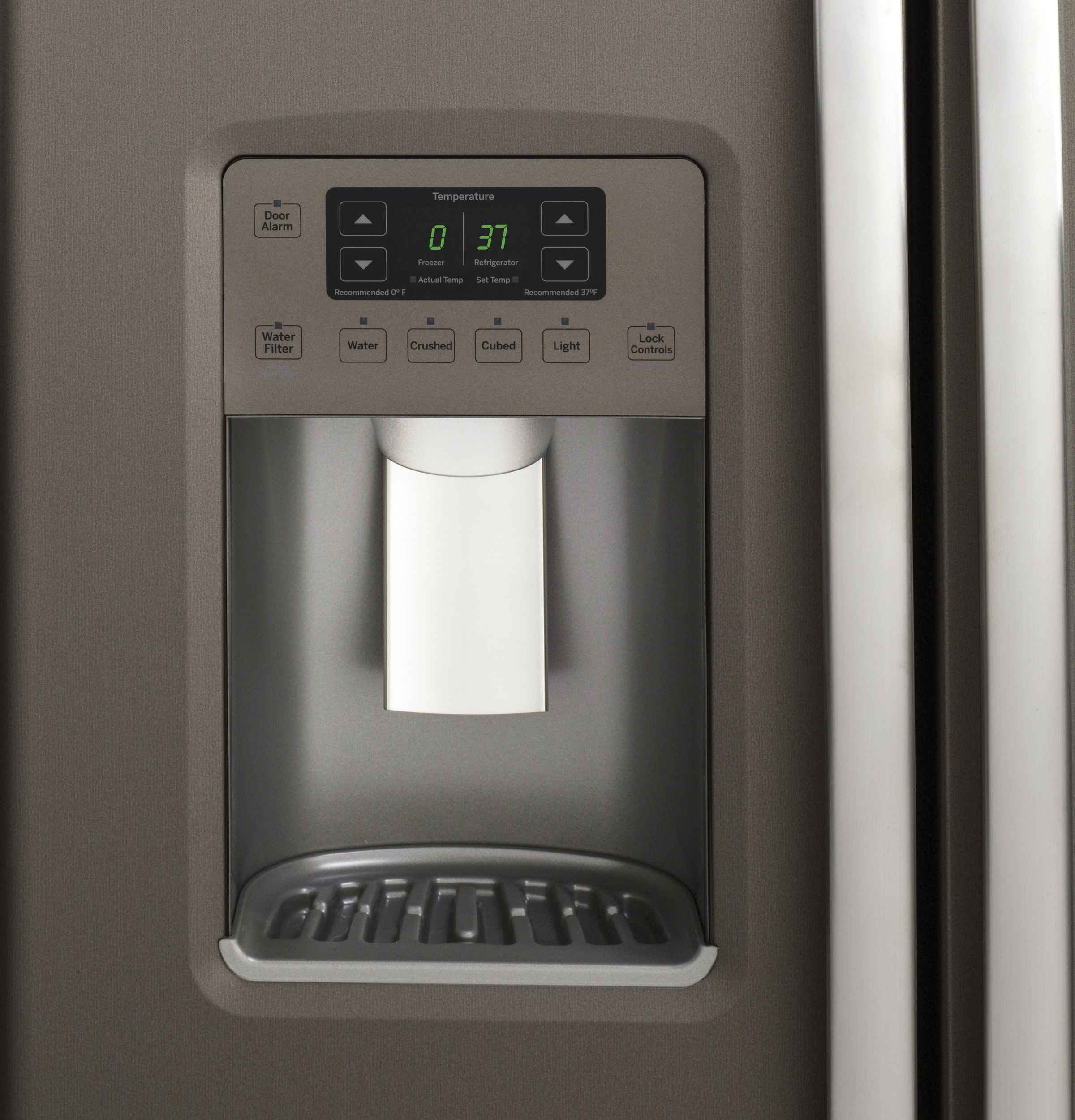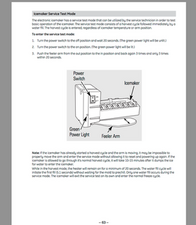Is your GE ice maker giving you the cold shoulder? You’re not alone.
Many people find themselves frustrated when their ice maker stops working, especially during those sweltering summer days or when you’re entertaining guests. It can feel like your trusty appliance is suddenly leaving you high and dry. But don’t worry, there’s hope.
This article is here to guide you through simple troubleshooting steps that can get your ice maker back on track. Imagine the relief of hearing those familiar clinks as fresh ice cubes fill the bin once more. With some straightforward tips and insights, you’ll be well-equipped to tackle the issue head-on. Ready to discover the secrets to a fully functioning ice maker? Let’s dive in.
Common Causes Of Ice Maker Issues
Understanding why a GE ice maker might not work can be challenging. Several common issues can affect its functionality. By identifying these problems, you can restore your ice maker’s performance. Let’s explore the typical causes behind these ice maker troubles.
Power Supply Problems
Ice makers need a steady power supply to function effectively. A power interruption can halt the ice-making process. Check if the ice maker is plugged in properly. Inspect the outlet to ensure it is working. Sometimes, a tripped circuit breaker might be the culprit. Resetting the breaker can resolve the issue.
Water Line Blockages
Water is essential for ice production. A blocked water line can stop the ice maker from making ice. Check the water line for any kinks or obstructions. A frozen water line can also be an issue. Warm the line to clear any ice buildup. Ensure the water valve is turned on for smooth flow.
Faulty Ice Maker Components
Components inside the ice maker can fail over time. The ice maker’s motor might be malfunctioning. Examine the motor for any signs of damage. The control module can sometimes fail, affecting operations. Replacing faulty components can restore functionality. Regular maintenance can prevent component failures.

Credit: fleetappliance.com
Troubleshooting Tips
Is your GE ice maker not working, leaving you with warm drinks and frustration? Don’t worry! With some straightforward troubleshooting tips, you can potentially resolve the issue without calling a technician. Understanding the common problems can save you time and money. Let’s dive into the practical steps that can get your ice maker back in action.
Checking Electrical Connections
First, ensure your ice maker is properly connected to a power source. It’s surprising how often a loose plug or tripped circuit breaker is the culprit. Check if the ice maker is securely plugged into the wall socket. If you recently rearranged your kitchen, it might have come loose. Look at your circuit breaker panel and reset any breakers that might have tripped.
Ask yourself: Is there power going to the ice maker? A simple test is to plug another appliance into the same outlet. If it doesn’t work, the outlet might be faulty. This quick check can save you from chasing other issues.
Inspecting The Water Line
The water line is the lifeline of your ice maker. If it’s clogged or kinked, your ice maker won’t produce ice. Inspect the water line for any visible blockages or bends that could impede water flow. Make sure the water supply valve is open. A partially closed valve can restrict water flow, leading to ice production issues.
Consider this: Has your water pressure changed recently? Low pressure can affect the ice-making process. You might need to clean the water filter or call your water service provider for further help.
Testing Ice Maker Functions
Now, let’s test the ice maker functions. Start by checking if the control arm is in the correct position. If it’s accidentally switched off, your ice maker won’t produce ice. Move the arm to the “on” position and wait a few hours to see if ice production resumes.
Next, look at the temperature settings in your freezer. The ideal temperature for ice production is around 0°F (-18°C). If the temperature is higher, it might be preventing ice formation. Adjust your settings and see if there’s improvement.
Ask yourself: Is there a strange noise coming from the ice maker? Unusual sounds could indicate a mechanical problem that might require professional attention. Listening carefully can provide clues about what might be wrong.
Troubleshooting your GE ice maker can seem daunting, but with these tips, you’re equipped to tackle common problems. Remember, sometimes it’s the simplest solutions that make the biggest difference. How did these steps help resolve your ice maker issues? Share your experience in the comments below!
Diy Repair Solutions
Stuck with a GE ice maker that isn’t working? Discover simple DIY repair solutions to fix common issues. Troubleshooting steps can help restore your ice maker’s functionality, ensuring a steady supply of ice in no time.
Having trouble with your GE ice maker? Before calling a professional, consider rolling up your sleeves and trying some DIY repair solutions. These fixes are straightforward and could save you time and money. Understanding the basics of your ice maker can empower you to tackle minor issues yourself. Let’s dive into some practical steps you can take to get your ice maker back on track.Cleaning The Water Filter
A clogged water filter might be the culprit behind your ice maker woes. Check your filter every six months and replace it if necessary. A clean filter ensures a steady flow of water, which is crucial for making ice. You can find the water filter in the upper right corner of the refrigerator. Twist it to remove, and check for any buildup or dirt. If it’s dirty, replace it with a new one. Keeping the filter clean not only helps your ice maker but also improves the overall water quality in your fridge.Replacing Broken Parts
Sometimes, the issue might be due to a broken component. Inspect parts like the ice mold, water inlet valve, or ejector arm. Look for visible signs of damage or wear and tear. You might be surprised at how easy it is to replace these parts. Order the necessary replacement parts online or from a local store. Use simple tools like a screwdriver to swap out the damaged pieces. By doing this, you extend the life of your ice maker and ensure it runs smoothly.Resetting The Ice Maker
Have you tried resetting your ice maker? It sounds simple, but it can work wonders. A reset can fix minor glitches that prevent ice production. To reset, locate the on/off switch or button on the ice maker unit. Turn it off for a few minutes, then switch it back on. Wait to see if the machine resumes making ice. This small step can sometimes clear up any software issues or temporary malfunctions. These DIY solutions can help you troubleshoot common ice maker problems. Have you tried any of these before? Share your experiences and let us know what worked for you!When To Call A Professional
Sometimes, despite your best DIY efforts, your GE ice maker simply won’t cooperate. Knowing when to call in a professional can save you time, money, and frustration. Let’s explore the key indicators that it’s time to reach out for expert help.
Identifying Complex Problems
Have you ever found yourself staring at a problem, feeling like you’re missing something? If your ice maker’s issue seems overly complex, it probably is. For instance, if your ice maker’s motor fails or you suspect an electrical fault, these are intricate issues best left to professionals.
Complex problems often require specialized tools and diagnostic skills. Attempting a fix without proper knowledge can lead to more damage. Can you imagine turning a minor issue into a major repair job just because you took a guess?
Considering Cost Vs. Repair Effort
Is the repair worth the effort and cost? It’s an important question to ask yourself. If parts are expensive or the repair process is lengthy, a professional can provide a cost-effective solution.
Think about the value of your time and potential additional expenses. Sometimes, the peace of mind from a professional repair outweighs the costs. Wouldn’t it be great to have your ice maker running perfectly without the hassle?
Understanding Warranty Coverage
Are you aware of your ice maker’s warranty details? Before taking any action, check if your ice maker is still under warranty. Repairs covered by a warranty can save you significant money.
Professional repairs often have the added benefit of not voiding your warranty. Have you considered how much a voided warranty could cost you in the long run? Understanding this aspect can guide your decision on whether to call a professional.
In the end, making an informed decision about when to call a professional can save you a lot of headaches. Your GE ice maker is an essential part of your kitchen, and ensuring it works efficiently is crucial. Wouldn’t it be nice to know you’ve made the right choice for both you and your appliance?
Preventive Maintenance Tips
Regularly clean the ice maker to prevent clogs. Check water supply lines for leaks or blockages. Ensure the freezer temperature is set correctly.
Preventive maintenance keeps your GE ice maker running smoothly. Regular care can prevent issues and extend the appliance’s life. Here are some simple tips to help you maintain your ice maker effectively.Regular Cleaning Schedule
Create a regular cleaning schedule for your ice maker. Clean it every two to three months. Use a mild detergent and warm water. Remove any ice buildup and wipe surfaces clean. This prevents mold and keeps ice tasting fresh.Monitoring Performance
Keep an eye on your ice maker’s performance. Check for unusual noises or slow ice production. These could signal a problem. Early detection can prevent bigger issues later. Regularly test the ice quality and adjust settings if needed.Upgrading Components
Consider upgrading worn-out parts. Replace old filters to ensure water purity. Look for signs of wear on moving parts. New components can improve efficiency. Upgrading can be a cost-effective way to prolong your ice maker’s life.
Credit: www.youtube.com

Credit: www.ifixit.com
Frequently Asked Questions
Why Is My Ge Ice Maker Not Producing Ice?
Your GE ice maker might have a clogged water line. Check for blockages or frozen lines.
How Do I Reset My Ge Ice Maker?
Locate the reset button on your ice maker. Press it for a few seconds.
What Causes Ice Maker To Stop Working?
Common reasons include power issues, jammed ice cubes, or a faulty water inlet valve.
How Often Should I Clean My Ice Maker?
Clean your ice maker every three to six months. This ensures proper functioning and hygiene.
Can A Water Filter Affect Ice Production?
Yes, a clogged water filter reduces water flow. Replace it regularly to maintain ice production.
Conclusion
Fixing a GE ice maker can seem hard, but it’s doable. Start by checking the power supply. Ensure the water line isn’t blocked. Clean the ice maker regularly to prevent clogs. If the problem persists, consult the user manual. Sometimes parts need replacing.
Seek professional help if necessary. Regular maintenance prevents future issues. Keep these tips handy for a smooth-running ice maker. A little effort goes a long way. Enjoy hassle-free ice any time. A working ice maker adds convenience to your kitchen.
Stay proactive and enjoy the benefits.
